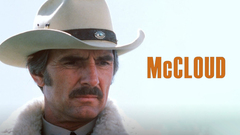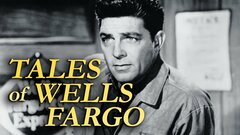As a product of the post-World War II Hollywood assembly line, actress Coleen Gray fared better than many other pretty young things lured to the studios with the promise of a long-term contract. A plum role as Victor Mature's girlfriend in "Kiss of Death" (1947) gave the dark-haired Nebraskan just the right career boost, setting her up for memorable turns as Tyrone Power's comely accomplice in "Nightmare Alley" (1947) and as John Wayne's prairie sweetheart in "Red River" (1948).
Equally adept at etching characters of virtue and vice, Gray segued seamlessly from playing a shady nurse in "The Sleeping City" (1950) to the heroine of "Kansas City Confidential" (1951), which paired her onscreen and off with leading man John Payne.
Following a failed early marriage, Gray's assignments were largely routine until Stanley Kubrick lifted her out of B-movie mediocrity when he cast her as Sterling Hayden's gun moll in the heist drama "The Killing" (1956). In middle age, the actress endeared herself to a new generation of cult film fans by playing a potential victim of "The Vampire" (1957) and an amoral cosmetics company CEO who discovers the secret to immortality in "The Leech Woman" (1960).
A familiar face on television, Gray quit show business for faith-based charity work alongside born-again Watergate convict Chuck Colson, but she reemerged late in celebration of her contributions to American cinema and to honor the memory of her departed co-stars and leading men. Her death on August 3, 2015 at the age of 92 was mourned by generations of film noir fans.
Coleen Gray was born Doris Bernice Jensen on Oct. 23, 1922, in Staplehurst, NE. The daughter of Danish immigrants, she attended Hamline University, a liberal arts college in Saint Paul, MN, from which she graduated summa cum laude with a degree in music and English literature.
Having met and fallen in love with a fellow student, Gray followed the boy to La Jolla, CA, where he was stationed with the Air Force and where Gray found work as a waitress. With the dissolution of the relationship, Gray traveled north to Los Angeles. Paying her rent with work at the YWCA, she registered for acting lessons with Max Reinhart protégé Carl Heinz Roth.
While performing in an amateur stage production, Gray was scouted by 20th Century Fox's Ivan Kahn. Invited to make a screen test for the studio, Gray was offered a seven-year exclusive contract at $150 per week. The Hollywood newcomer also gained a husband when she married writer Rod Amateau, who had penned the script for her screen test.
Gray made her film debut with a bit part in "State Fair" (1945) and was utilized in minor roles in "Three Little Girls in Blue" (1946) and "The Shocking Miss Pilgrim" (1947), though her scene in the latter wound up on the cutting room floor. She was given a proper introduction to film audiences in Henry Hathaway's film noir classic "Kiss of Death" (1947), playing star Victor Mature's love interest in the tale of an ex-con whose attempt to go straight makes him a target for psychotic gangster Richard Widmark.
Darker still was Gray's exotic turn in Edmund Goulding's carnival melodrama "Nightmare Alley" (1947), in which she was the sultry but scrupulous shill of bogus spiritualist Tyrone Power, who betrays her lover and accomplice rather than permit the bilking of a lonely old man grieving for his dead daughter. In Howard Hawks' epic Western "Red River" (1948), Gray was memorable in the small but pivotal role of star John Wayne's sweetheart, whose death at the hands of Comanche marauders sets in motion a sprawling saga of revenge and redemption along the Chisholm Trail.
Divorced from Amateau by 1949 and retaining sole custody of their daughter, Gray relocated to Culver City to make a fresh start. She was paired with William Holden for the featherweight period comedy "Father is a Bachelor" (1950) and traveled to New York to play a nurse with dark secrets in "The Sleeping City" (1950), a fictitious exposé of hospital corruption directed by George Sherman.
The actress enjoyed leading lady status in Phil Karlson's crime drama "Kansas City Confidential" (1950) and a long-term off-screen romance with leading man John Payne. After a national tour with the play "The Moon is Blue," Gray returned to features with a string of programmers, among them "Saber Jet" (1953) with Robert Stack, "The Fake" (1953) with Dennis O'Keefe, and "Arrow in the Dust" (1954), which paired her with garrulous contract player Sterling Hayden.
Stanley Kubrick reteamed the two to greater effect in "The Killing" (1956), the edgy chronicle of a doomed racetrack heist that redefined the caper film and bridged the gap between film noir and the downbeat procedurals of the coming decades.
Having remarried in 1953 to aviation executive William Clymer Bidlack and given birth to a son, Gray settled into a busy period as a jobbing actress, whose string of forgettable film assignments was broken up by the mirthfully ignoble likes of "The Vampire" (1957), "The Leech Woman" (1960), and "The Phantom Planet" (1961).
"Hell's Five Hours" (1958) dropped the actress into the middle of an atomic hostage crisis with literally Apocalyptic implications and in "Town Tamer" (1965) she fell early as the slain wife of Kansas lawman Dana Andrews, who had been leading man of her feature film debut 20 years earlier.
Gray worked extensively in television, turning up with reliable professionalism on such weekly series as "Maverick" (ABC, 1957-1962), "Have Gun - Will Travel" (CBS, 1957-1963), "Rawhide" (CBS, 1959-1965) and "Alfred Hitchcock Presents" (CBS, 1955-1962). Nearing 50, she returned to features as the wife of millionaire Raymond Burr in John Guillermin's "P.J." (1968), starring George Peppard as a private eye framed for murder.
Though Gray's screen time amounted to mere minutes, she made the most of a humiliation scene in which her fashionable but browbeaten society woman confronts Burr's eye candy mistress Gayle Hunnicutt. The death of Gray's second husband in 1978 left the actress despondent and reliant on the kindness of church friends, who set her up widowed biblical scholar Joseph Fritz Zeiser.
Married for a third time in 1979, Gray joined Zeiser in his work with Prison Fellowship, a non-profit charity founded by disgraced Nixon advisor Charles Colson, who had embraced Evangelical Christianity while serving a prison sentence for obstruction of justice. Gray's final film role was in the Christian survival drama "A Cry from the Mountain" (1985), funded by and featuring the Reverend Billy Graham in a sermonizing cameo.
Gray retired from show business after appearing in a disarmingly poignant 1986 episode of the syndicated horror anthology series "Tales from the Darkside" (1983-1988), as a grieving mother who maintains a shrine for her daughter despite the fact that the young woman is very much alive.
Honored in 2006 for her work in Hollywood Westerns, Gray was also recognized in later life for her contributions to film noir and horror and science fiction cinema. Colleen Gray died of natural causes at her home in Bel Air, California on August 3, 2015. She was 92 years old.
By Richard Harland Smith









































































































































